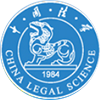摘要(Abstract):
我国传统的刑事证据推理模式属于日常思维模式,存在着自发性、粗放性和跳跃性等弊端。威格莫尔分析法和图尔敏模型是西方学者提出的两种分析工具,有助于推动刑事证据推理实现从日常思维模式到精密论证模式的转型。我们应当批判地吸收威格莫尔分析法和图尔敏模型的合理之处,并结合我国国情加以本土化改造。具体思路是:将刑事证据推理分为目标事实版本的确立、证据推理模型的建构以及证据总体分量的评估等三个步骤,依次递进、环环相扣地展开。
关键词(KeyWords): 司法证明;证据推理;威格莫尔分析法;图尔敏模型
Abstract:
Keywords:
基金项目(Foundation): 国家社科基金项目“刑事裁判中的证据推理机制研究”(项目批准号:13BFX071)的阶段性成果
作者(Author): 封利强;
Email:
参考文献(References):
- (1)陈朴生:《刑事证据法》,台湾三民书局1979年版,第151页。
- (2)郑成良:《法律思维是一种职业的思考方式》,载葛洪义主编:《法律方法与法律思维》(第1辑),中国政法大学出版社2002年版,第40页。
- (3)参见龙宗智、衡静:《直觉在证据判断中的作用》,载何家弘主编:《证据学论坛》(第2卷),中国检察出版社2001年版,第403页。
- (4)Joseph C.Huleheson,Jr.,The Judgment Intuitive:The Function of the'Hunch'in Judicial Decision,14 Cornell L.Q.274,278(1929).
- (5)Jerome Frank,Law and the Modern Mind,al 112(Transaction Publishers,1930).
- (6)参见刘畅:《证明与印证》,载《世界哲学》2011年第3期。
- (7)参见[美]里德·黑斯蒂主编:《陪审员的内心世界——陪审员裁决过程的心理分析》,刘威、李恒译,北京大学出版社2006年版,第240页。
- (8)前引(6),刘畅文。
- (9)很多英美学者习惯于使用“证据分析”的提法来描述证据推理。他们所称的“证据分析”显然不是对证据的自然科学属性的分析,也不是对单个证据证明力的分析,而是对证据与事实之间逻辑关系的分析。
- (10)对于“generalization”学界有多种不同的译法,有学者将其翻译为“概括”、“涵括”、“普遍原理”等。不过,笔者认为,在推理和论证的语境下,将其翻译为“概化命题”更为可取。
- (11)See John H.Wigmore,the Science of Judicial Proof:As Given by Logic,Psychology,and General Experience,and Illustrated in Judicial Trials,at 21(Little,Brown,and company,1937).
- (12)See Terence Anderson,On Generalizations I:A Preliminary Exploration,40 South Texas L.Rev.455,455(1999).
- (13)See Stephen E.Toulmin,the Uses of Argument,al 89(Cambridge University Press,2003).
- (14)对于“Warrants”一词.学界有“保证”、“正当理由”、“凭据”、“理据”等多种译法,笔者认为“理据”这一泽法比较贴切。
- (15)See Stephen E.Toulmin,supra note(13),at 91.
- (16)参见熊明辉:《诉讼论证——诉讼博弈的逻辑分析》,中国政法大学出版社2010年版,第123页。
- (17)前引(7),黑斯蒂书,第30-31页。
- (18)See John H.Wigmore,supra note 11,at 48.
- (19)William Twining,Theories of Evidence:Bentham and Wigmore,at 142-143(Stanford University Press,1985).
- (20)Peter Tillers&Eric D.Green,Probability and Inference in the Law of Evidence:the Uses and Limits of Bayesianism,at 317(Kluwer Academic Publishers,1988).
- (21)William Twining,Rethinking Evidence:Exploratory Essays,at 444-445(Cambridge University Press,2006).
- (22)王国有:《日常思维与非日常思维》,人民出版社2005年版,第30页。
- (23)See Richard D.Friedman,Infinite Strands,Infinitesimally Thin:Storytelling,Bayesianism,Hearsay and Other Evidence,14Cardozo L.Rev.79,92(1992).
- (24)据媒体报道,当时杭州市出租车已经普遍安装了GPS定位系统,是有可能调取到这方面证据的。
- (25)Atocha Aliseda,Abductive Reasoning:Logical Investigations into Discovery and Explanation,at 33(Springer,2006).
- (26)有学者将论证中使用的概化命题称为证据性概化命题(evidential generalizations),而把故事中使用的概化命题称为因果性概化命题(causal generalizations)。See Floris Bex,Arguments,Stories and Criminal Evidence:A Formal Hybrid Theory,at 27(Springer,2011).
- (27)See Gilbert Harman,the Inference to the Best Explanation,74 Philosophical Review 88,91(1965).
- (28)See Atocha Aliseda,supra note(25),at 33.
- (29)参见熊秋红:《转变中的刑事诉讼法学》,北京大学出版社2004年版,第289页。
- (30)See Stephen E.Toulmin,supra note(13),at 101.
- (31)参见杨宁芳:《图尔敏论证逻辑思想研究》,人民出版社2012年版,第104页。
- (32)参见封利强:《司法证明过程论》,法律出版社2012年版,第163-164页。
- (33)在图表中,P代表作为结论的待证事实,E代表作为前提的证据或事实命题,下同。
- (34)See L.Jonathan Cohen,the Probable and the Provable,at 60(Clarendon Press,1977).
- (35)前引(16),熊明辉书,第21页。
- (36)See L.Jonathan Cohen,supra note(34),at 94.
- (37)Id.,at 93.
- (38)前引(16),熊明辉书,第21页。
- (39)L.Jonathan Cohen,supra note(34),at 40.
- (40)Id.,at 40-41.
- (41)See William Twining,supra note(19),at 125.
- (42)L.Jonathan Cohen,supra note(34),at 267.
- (43)See Douglas N.Walton,Practical Reasoning:Goal-driven,Knowledge-based,Aclion-guiding Argumentation,at 356,(Rowman&Littlefield,1990).
- (44)Id.,at 356.
- (45)See William Twining,supra note(19),at 54-55.
- (46)See Jean Goodwin,Wigmore's Chart Method,20 Informal Logic 223,233(2000).
- (47)参见龙宗智:《中国法语境中的“排除合理怀疑”》,载《中外法学》2012年第6期。
- (48)蔡墩铭:《审判心理学》,台湾水牛出版社1981年版,第683页。
- (49)[苏]拉洪诺夫:《苏维埃刑事诉讼中证人的证言》,董镜苹、俞康勤译,法律出版社1956年版,第181页。
- (50)See Reid Hastie,Steven D.Penrod&Nancy Pennington,Inside the Jury,at 163(Harvard University Press,1983).

